-
Executive Summary
-
Scope of the Report
-
Market Definition
-
Scope of the
- Research Objectives
- Assumptions & Limitations
-
Study
-
Market Structure
-
Market
-
Research Methodology
-
Research Process
-
Secondary Research
-
Primary Research
-
Forecast Model
-
Market Landscape
-
Supply Chain Analysis
-
Porter’s Five Forces Analysis
-
Threat of New Entrants
-
Power of Buyers
-
of Suppliers
-
Market Dynamics of the Global Aluminum Pigments Market
-
Opportunities
-
Trends/Strategies
-
Raw Material Suppliers
-
Manufacturers/Producers
-
Distributors/Retailers/Wholesalers/E-Commerce
-
End-Users
-
Bargaining
-
Bargaining Power
-
Threat of Substitutes
-
Intensity of Competitive Rivalry
-
Introduction
-
Drivers
-
Restraints
-
Challenges
-
Global Aluminum
-
Pigments Market, by Type
-
Introduction
-
Leafing
-
Market Estimates & Forecast, 2020–2027
-
Market Estimates & Forecast, by Region, 2020–2027
-
Non-Leafing
-
Market Estimates & Forecast, 2020–2027
-
Market Estimates & Forecast, by Region, 2020–2027
-
Global Aluminum Pigments Market, by Form
-
Introduction
-
Paste
- Market Estimates
- Market Estimates & Forecast,
-
& Forecast, 2020–2027
-
by Region, 2020–2027
-
Powder
- Market
- Market Estimates &
-
Estimates & Forecast, 2020–2027
-
Forecast, by Region, 2020–2027
-
Pellet
- Market
-
Market Estimates & Forecast, 2020–2027
-
Estimates & Forecast, by Region, 2020–2027
-
Flakes
- Market Estimates & Forecast, 2020–2027
-
Market Estimates & Forecast, by Region, 2020–2027
-
Global Aluminum Pigments Market, by End-use Industry
-
Introduction
-
Paints & Coatings
- Market Estimates & Forecast, 2020–2027
-
Market Estimates & Forecast, by Region, 2020–2027
-
Printing Ink
-
Plastics
-
Cosmetics
-
Others
-
Market Estimates & Forecast, 2020–2027
-
Market Estimates & Forecast, by Region, 2020–2027
-
Market Estimates & Forecast, 2020–2027
-
Market Estimates & Forecast, by Region, 2020–2027
-
Market Estimates & Forecast, 2020–2027
-
Market Estimates & Forecast, by Region, 2020–2027
-
Market Estimates & Forecast, 2020–2027
-
Market Estimates & Forecast, by Region, 2020–2027
-
Global Aluminum Pigments Market, by Region
-
Introduction
-
North America
- Market
- Market
- Market
-
Market Estimates & Forecast, 2020–2027
-
Estimates & Forecast, by Type, 2020–2027
-
Estimates & Forecast, by Form, 2020–2027
-
Estimates & Forecast, by End-use Industry, 2020–2027
-
US
-
Market Estimates & Forecast, 2020–2027
-
Market Estimates & Forecast, by Form, 2020–2027
-
by End-use Industry, 2020–2027
-
& Forecast, 2020–2027
-
& Forecast, by Form, 2020–2027
-
Estimates & Forecast, 2020–2027
-
& Forecast, by Type, 2020–2027
-
& Forecast, by Form, 2020–2027
-
& Forecast, by End-use Industry, 2020–2027
-
Germany
-
Market Estimates & Forecast, 2020–2027
-
by Type, 2020–2027
-
Market Estimates & Forecast,
-
Canada
-
Market Estimates
-
Market Estimates & Forecast, by Type, 2020–2027
-
Market Estimates
-
Market Estimates & Forecast, by End-use Industry,
-
Europe
- Market
- Market Estimates
- Market Estimates
- Market Estimates
-
Market Estimates & Forecast, by Form, 2020–2027
-
by End-use Industry, 2020–2027
-
Market Estimates & Forecast,
-
France
-
Market Estimates & Forecast,
-
Market Estimates & Forecast, by Type, 2020–2027
-
by Form, 2020–2027
-
Market Estimates & Forecast,
-
Market Estimates & Forecast, by End-use Industry, 2020–2027
-
& Forecast, by Type, 2020–2027
-
& Forecast, by End-use Industry, 2020–2027
-
& Forecast, 2020–2027
-
& Forecast, by Form, 2020–2027
-
& Forecast, by Type, 2020–2027
-
& Forecast, by End-use Industry, 2020–2027
-
& Forecast, 2020–2027
-
& Forecast, by Form, 2020–2027
-
Industry, 2020–2027
-
Forecast, 2020–2027
-
& Forecast, by Form, 2020–2027
-
Industry, 2020–2027
-
& Forecast, 2020–2027
-
& Forecast, by Form, 2020–2027
-
Industry, 2020–2027
-
Market Estimates & Forecast, 2020–2027
-
Italy
-
Market Estimates & Forecast, 2020–2027
-
Market Estimates
-
Market Estimates & Forecast, by Form, 2020–2027
-
Market Estimates
-
Spain
-
Market Estimates
-
Market Estimates & Forecast, by Type, 2020–2027
-
Market Estimates
-
Market Estimates & Forecast, by End-use Industry,
-
UK
-
Market Estimates & Forecast, 2020–2027
-
Market Estimates
-
Market Estimates & Forecast, by Form, 2020–2027
-
Market Estimates
-
Russia
-
Market Estimates
-
Market Estimates & Forecast, by Type, 2020–2027
-
Market Estimates
-
Market Estimates & Forecast, by End-use
-
Poland
-
Market Estimates &
-
Market Estimates & Forecast, by Type, 2020–2027
-
Market Estimates
-
Market Estimates & Forecast, by End-use
-
Rest of Europe
-
Market Estimates
-
Market Estimates & Forecast, by Type, 2020–2027
-
Market Estimates
-
Market Estimates & Forecast, by End-use
-
Asia-Pacific
-
Market Estimates & Forecast, by Type, 2020–2027
-
Market Estimates & Forecast, by Form, 2020–2027
-
Market Estimates & Forecast, by End-use Industry, 2020–2027
-
& Forecast, by Type, 2020–2027
-
& Forecast, by End-use Industry, 2020–2027
-
India
-
Market Estimates & Forecast, 2020–2027
-
by Type, 2020–2027
-
China
-
Market Estimates & Forecast, 2020–2027
-
Market Estimates
-
Market Estimates & Forecast, by Form, 2020–2027
-
Market Estimates
-
Market Estimates & Forecast,
-
Market Estimates & Forecast, by Form, 2020–2027
-
by End-use Industry, 2020–2027
-
& Forecast, 2020–2027
-
& Forecast, by Form, 2020–2027
-
& Forecast, 2020–2027
-
& Forecast, by Form, 2020–2027
-
& Forecast, 2020–2027
-
& Forecast, by Form, 2020–2027
-
Forecast, 2020–2027
-
& Forecast, by Form, 2020–2027
-
Industry, 2020–2027
-
Market Estimates & Forecast,
-
Japan
-
Market Estimates
-
Market Estimates & Forecast, by Type, 2020–2027
-
Market Estimates
-
Market Estimates & Forecast, by End-use Industry,
-
Australia & New Zealand
-
Market Estimates
-
Market Estimates & Forecast, by Type, 2020–2027
-
Market Estimates
-
Market Estimates & Forecast, by End-use Industry,
-
Indonesia & South Korea
-
Market Estimates
-
Market Estimates & Forecast, by Type, 2020–2027
-
Market Estimates
-
Market Estimates & Forecast, by End-use Industry,
-
Rest of Asia-Pacific
-
Market Estimates &
-
Market Estimates & Forecast, by Type, 2020–2027
-
Market Estimates
-
Market Estimates & Forecast, by End-use
-
Middle East & Africa
- Market Estimates & Forecast, 2020–2027
-
Market Estimates & Forecast, by Type, 2020–2027
-
Market Estimates & Forecast, by Form, 2020–2027
-
Market Estimates & Forecast, by End-use Industry, 2020–2027
-
by Type, 2020–2027
-
GCC
-
Market Estimates & Forecast, 2020–2027
-
Market Estimates & Forecast,
-
Market Estimates & Forecast, by Form, 2020–2027
-
by End-use Industry, 2020–2027
-
& Forecast, 2020–2027
-
Forecast, by Form, 2020–2027
-
& Forecast, by Type, 2020–2027
-
& Forecast, by End-use Industry, 2020–2027
-
& Forecast, 2020–2027
-
Market Estimates & Forecast,
-
Israel
-
Market Estimates
-
Market Estimates & Forecast, by Type, 2020–2027
-
Market Estimates &
-
Market Estimates & Forecast, by End-use Industry, 2020–2027
-
North Africa
-
Market Estimates & Forecast, 2020–2027
-
Market Estimates
-
Market Estimates & Forecast, by Form, 2020–2027
-
Market Estimates
-
Turkey
-
Market Estimates
-
Market Estimates & Forecast, by Type, 2020–2027
-
by Form, 2020–2027
-
Market Estimates & Forecast,
-
Market Estimates & Forecast, by End-use Industry, 2020–2027
-
Rest of the Middle East & Africa
-
Market Estimates & Forecast,
-
Market Estimates & Forecast, by Type, 2020–2027
-
Market Estimates & Forecast, by Form,
-
Market Estimates & Forecast, by End-use Industry, 2020–2027
-
Latin America
-
Forecast, 2020–2027
-
by Type, 2020–2027
-
by Form, 2020–2027
-
by End-use Industry, 2020–2027
-
Market Estimates &
-
Market Estimates & Forecast,
-
Market Estimates & Forecast,
-
Market Estimates & Forecast,
-
Brazil
-
Market Estimates & Forecast,
-
Market Estimates & Forecast, by Type, 2020–2027
-
Market Estimates & Forecast, by Form,
-
Market Estimates & Forecast, by End-use Industry, 2020–2027
-
Mexico
-
Market Estimates & Forecast, 2020–2027
-
Market Estimates & Forecast, by Type,
-
Market Estimates & Forecast, by Form, 2020–2027
-
Industry, 2020–2027
-
Market Estimates & Forecast, by End-use
-
Argentina
-
Market Estimates & Forecast,
-
Market Estimates & Forecast, by Type, 2020–2027
-
Market Estimates & Forecast, by Form,
-
Market Estimates & Forecast, by End-use Industry, 2020–2027
-
Rest of Latin America
-
& Forecast, by Type, 2020–2027
-
& Forecast, by End-use Industry, 2020–2027
-
Market Estimates & Forecast, 2020–2027
-
Market Estimates
-
Market Estimates & Forecast, by Form, 2020–2027
-
Market Estimates
-
Company
-
Landscape
-
Introduction
-
Market Strategy
-
Key Development
-
Analysis
-
(Expansions/Mergers & Acquisitions/Joint Ventures/New Form
-
Developments/Agreements/Investments)
-
Company Profiles
-
Silberline Manufacturing Co., Inc.
- Company Overview
- Financial Updates
- Strategy
- Key Developments
- SWOT
-
Form/Business Segment Overview
-
Analysis
-
ALTANA
- Company
- Financial Updates
- Strategy
- Key Developments
- SWOT
-
Overview
-
Form/Business Segment Overview
-
Analysis
-
BASF SE
- Company Overview
- Financial Updates
- Strategy
- Key Developments
- SWOT
-
Form/Business Segment Overview
-
Analysis
-
Kolortek Co., Ltd
- Company Overview
- Form/Business
- Strategy
- SWOT Analysis
- Company Overview
- Form/Business
- Strategy
- SWOT Analysis
-
Financial Updates
-
Segment Overview
-
Key Developments
-
GEOTECH
-
Financial Updates
-
Segment Overview
-
Key Developments
-
Hefei Sunrise Aluminium Pigments Co.,Ltd
- Company Overview
- Financial
- Form/Business Segment Overview
- Strategy
- Key Developments
- SWOT Analysis
-
Updates
-
Asahi Kasei
- Financial Updates
- Form/Business Segment Overview
- Key Developments
-
Corporation
-
Company Overview
-
Strategy
-
SWOT Analysis
-
Toyal America, Inc.
- Company Overview
- Financial Updates
- Strategy
- Key Developments
- SWOT
-
Form/Business Segment Overview
-
Analysis
-
CARLFORS BRUK
- Company Overview
- Form/Business
- Strategy
- SWOT Analysis
- Financial Updates
- Form/Business Segment Overview
- Strategy
- SWOT Analysis
-
Financial Updates
-
Segment Overview
-
Key Developments
-
FX Pigments Pvt. Ltd
-
Company Overview
-
Key Developments
-
METAFLAKE Ltd.
- Company Overview
- Form/Business
- Strategy
- Key Developments
-
Financial Updates
-
Segment Overview
-
SWOT Analysis
-
Arasan Aluminium Industries (P)
- Company
- Financial Updates
- Form/Business Segment Overview
- Key Developments
- SWOT Analysis
-
Ltd.
-
Overview
-
Strategy
-
Conclusion
-
LIST OF TABLES
-
Global
-
Aluminum Pigments Market, by Region, 2020–2027
-
Table 2
-
North America: Aluminum Pigments Market, by Country, 2020–2027
-
Europe: Aluminum Pigments Market, by Country, 2020–2027
-
Asia-Pacific: Aluminum Pigments Market, by
-
Country, 2020–2027
-
Middle East &
-
Africa: Aluminum Pigments Market, by Country, 2020–2027
-
Table
-
Latin America: Aluminum Pigments Market, by Country, 2020–2027
-
Global Aluminum Pigments Type Market, by Region,
-
North America: Aluminum Pigments
-
Type Market, by Country, 2020–2027
-
Europe:
-
Aluminum Pigments Type Market, by Country, 2020–2027
-
Table10
-
Asia-Pacific: Aluminum Pigments Type Market, by Country, 2020–2027
-
Table11 Middle East & Africa: Aluminum Pigments Type Market,
-
by Country, 2020–2027
-
Table12 Latin America:
-
Aluminum Pigments Type Market, by Country, 2020–2027
-
Table13
-
Global Aluminum Pigments Form Market, by Region, 2020–2027
-
Table14 North America: Aluminum Pigments Form Market, by Country,
-
Table15 Europe: Aluminum Pigments
-
Form Market, by Country, 2020–2027
-
Table16 Asia-Pacific:
-
Aluminum Pigments Form Market, by Country, 2020–2027
-
Table17
-
Middle East & Africa: Aluminum Pigments Form Market, by Country, 2020–2027
-
Table18 Latin America: Aluminum Pigments Form Market,
-
by Country, 2020–2027
-
Table19 Global Aluminum
-
Pigments End-use Industry Market, by Region, 2020–2027
-
Table20
-
North America: Aluminum Pigments End-use Industry Market, by Country, 2020–2027
-
Table21 Europe: Aluminum Pigments End-use Industry
-
Market, by Country, 2020–2027
-
Table22 Asia-Pacific:
-
Aluminum Pigments End-use Industry Market, by Country, 2020–2027
-
Table23 Middle East & Africa: Aluminum Pigments End-use
-
Industry Market, by Country, 2020–2027
-
Table24 Latin
-
America: Aluminum Pigments End-use Industry Market, by Country, 2020–2027
-
Table25 Global Type Market, by Region, 2020–2027
-
Table26 Global Form Market, by Region, 2020–2027
-
Table27 Global End-use Industry Market, by Region, 2020–2027
-
Table28 North America: Aluminum Pigments Market, by
-
Country
-
Table29 North America: Aluminum Pigments Market,
-
by Type
-
Table30 North America: Aluminum Pigments Market,
-
by Form
-
Table31 North America: Aluminum Pigments Market,
-
by End-use Industry
-
Table32 Europe: Aluminum Pigments Market,
-
by Country
-
Table33 Europe: Aluminum Pigments Market,
-
by Type
-
Table34 Europe: Aluminum Pigments Market, by Form
-
Table35 Europe: Aluminum Pigments Market, by End-use Industry
-
Table36 Asia-Pacific: Aluminum Pigments Market, by Country
-
Table37 Asia-Pacific: Aluminum Pigments Market, by Type
-
Table38
-
Asia-Pacific: Aluminum Pigments Market, by Form
-
Table39
-
Asia-Pacific: Aluminum Pigments Market, by End-use Industry
-
Table40
-
Middle East & Africa: Aluminum Pigments Market, by Country
-
Table41
-
Middle East & Africa Aluminum Pigments Market, by Type
-
Table42
-
Middle East & Africa Aluminum Pigments Market, by Form
-
Table43 Middle East & Africa: Aluminum Pigments Market,
-
by End-use Industry
-
Table44 Latin America: Aluminum
-
Pigments Market, by Country
-
Table45 Latin America
-
Aluminum Pigments Market, by Type
-
Table46 Latin America Aluminum
-
Pigments Market, by Form
-
Table47 Latin America:
-
Aluminum Pigments Market, by End-use Industry
-
LIST
-
OF FIGURES
-
Global Aluminum Pigments Market Segmentation
-
Forecast Research Methodology
-
FIGURE 3
-
Porter’s Five Forces Analysis of Global Aluminum Pigments Market
-
FIGURE
-
Value Chain of Global Aluminum Pigments Market
-
FIGURE 5
-
Share of Global Aluminum Pigments Market in 2020, by Country (%)
-
FIGURE
-
Global Aluminum Pigments Market, 2020–2027,
-
FIGURE 7
-
Global Aluminum Pigments Market Size by Types, 2020
-
FIGURE 8
-
Share of Global Aluminum Pigments Market, by Type, 2020–2027
-
Global Aluminum Pigments Market Size, by Form, 2020
-
Share of Global Aluminum Pigments Market, by Form, 2020–2027
-
Global Aluminum Pigments Market Size, by End-use Industry, 2020
-
Share of Global Aluminum Pigments Market, by End-use Industry,

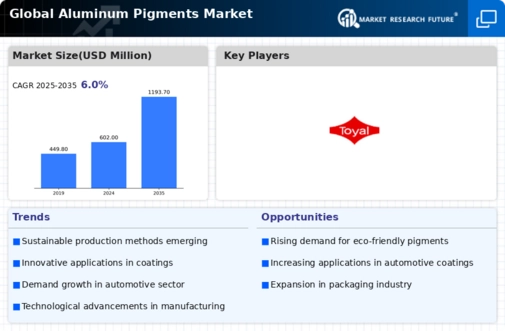
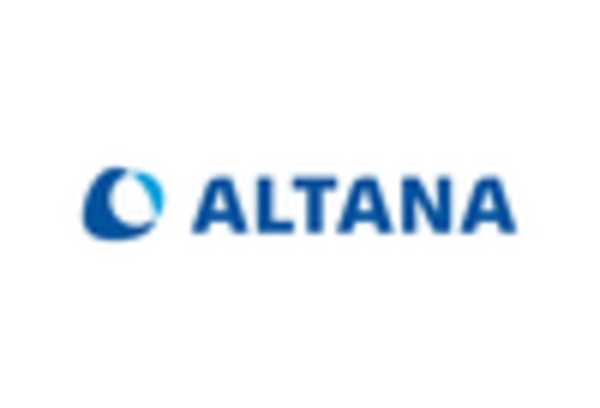
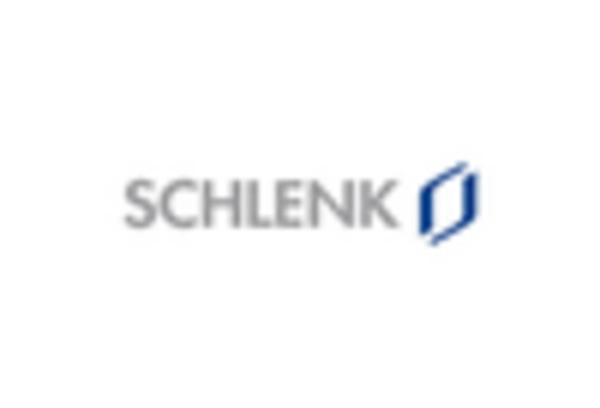

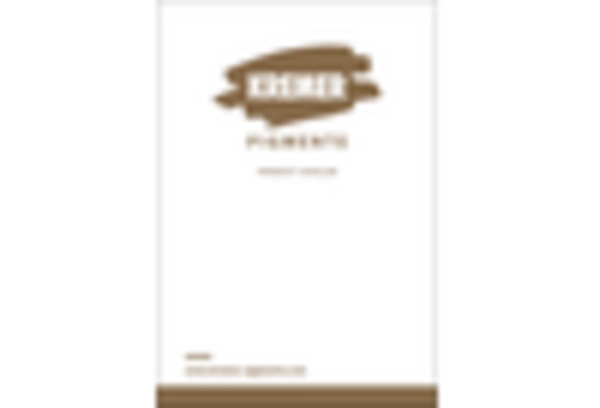
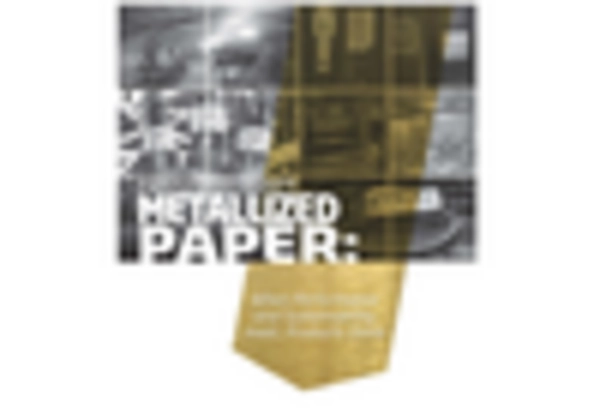
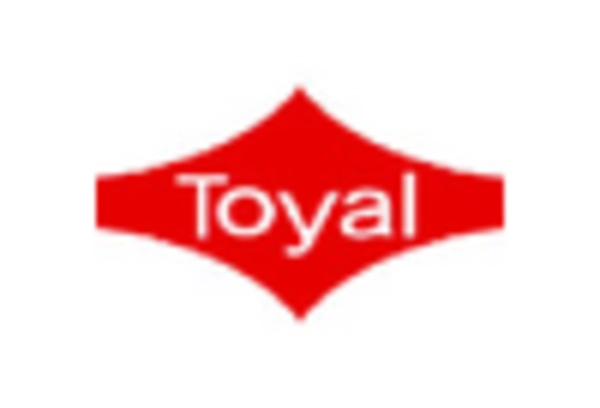









Leave a Comment